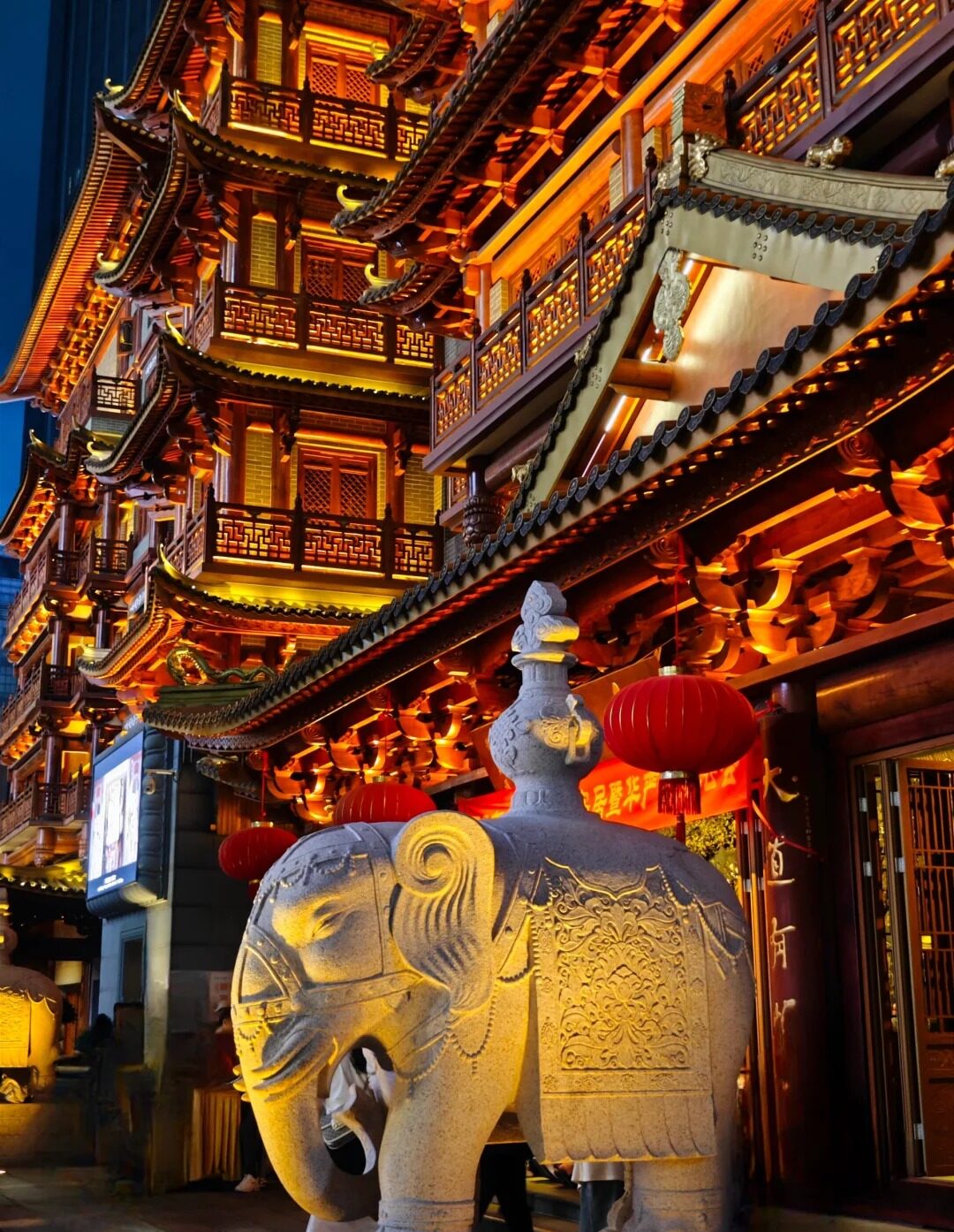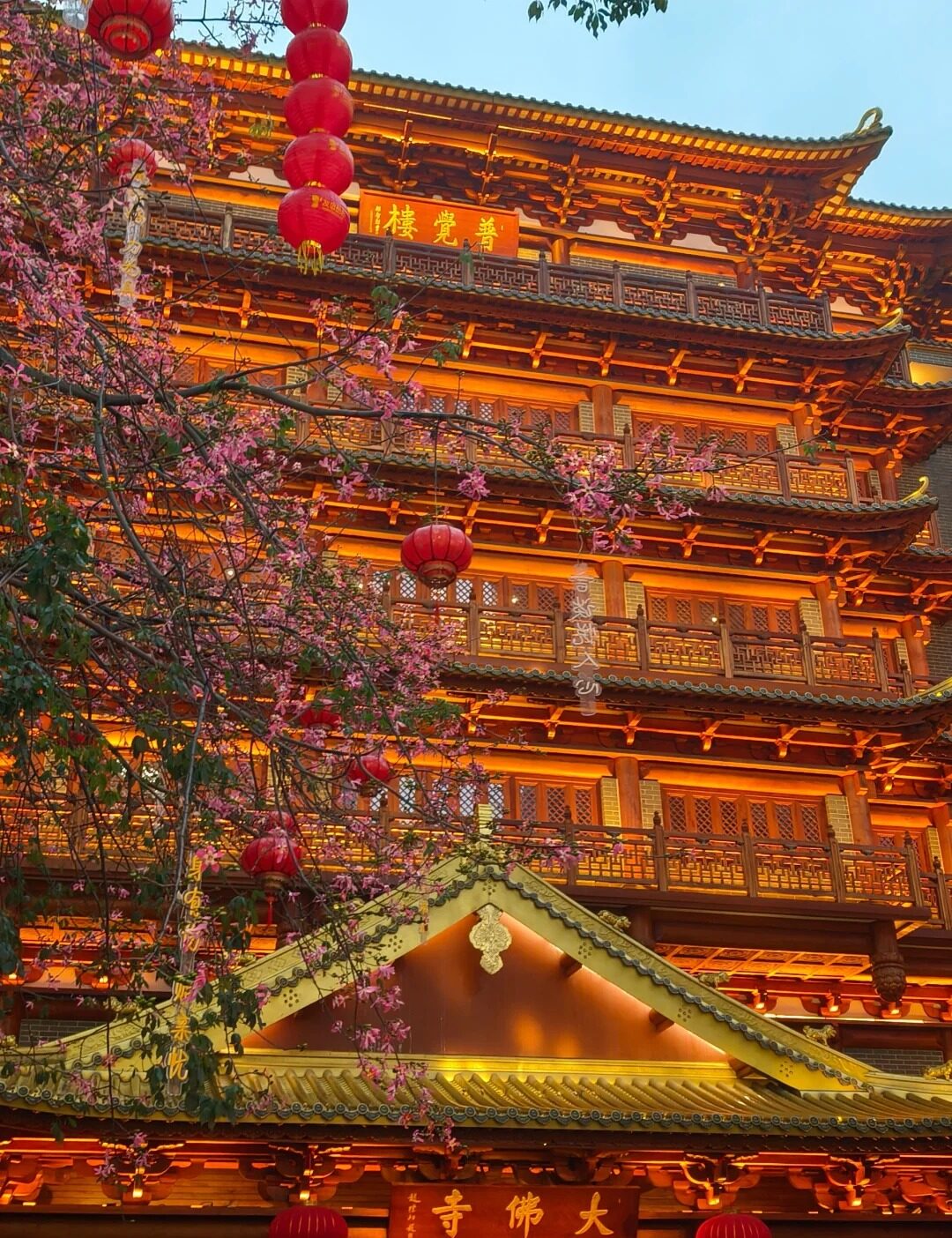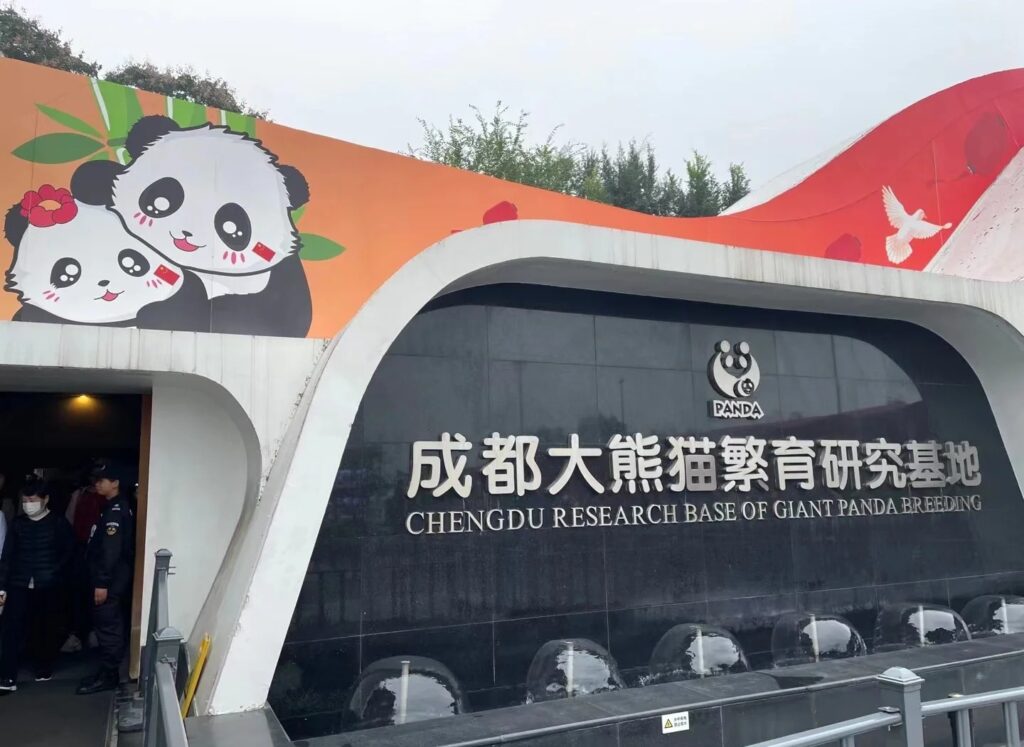Visiting Information
| Information | Details |
|---|---|
| Chinese Name | 大佛寺 (Dàfó Sì) |
| Location and Address | No. 21 Huangsha Avenue, Liwan District, Guangzhou, Guangdong Province, China |
| Opening Time/Hours | 6:00 AM – 5:00 PM (daily) |
| Entrance Fee | Free |
| How to Get There | By Metro: Take Line 1 to Huangsha Station, Exit D By Bus: Take bus 3, 7, 58, 85, 204, 208, or 261 to Huangsha Stop By Taxi: About 20 minutes from Guangzhou Railway Station |
| Best Time for Visit | October to April for pleasant weather; early morning for a peaceful atmosphere |
| Contact Info | Phone: +86 20 8188 2308 Email: Not available |
Overview
Big Buddha Temple, also known as Hualin Temple, is one of the oldest and most significant Buddhist temples in Guangzhou, China. Located in the bustling Liwan District, this temple is renowned for its rich history, impressive architecture, and cultural importance. The temple complex houses several halls, pagodas, and a notable collection of Buddhist artifacts, making it a popular destination for both religious pilgrims and tourists interested in Chinese culture and history.
Historical Background
Big Buddha Temple has a history dating back over 1,400 years to the Tang Dynasty. It was originally established in 537 AD during the Liang Dynasty and was known as Xiguang Temple. The temple gained its current name during the Northern Song Dynasty (960-1127) when a large Buddha statue was enshrined there. Throughout its long history, the temple has undergone numerous renovations and expansions, surviving various historical upheavals and natural disasters. It has played a significant role in the spread of Buddhism in southern China and has been an important center for Buddhist studies and cultural exchange.

Architectural Features
- Hall of the Celestial Kings: This impressive hall serves as the temple’s entrance and houses statues of the Four Heavenly Kings, each guarding a cardinal direction. The hall’s architecture features intricate wooden carvings and colorful paintings, showcasing traditional Chinese craftsmanship.
- Mahavira Hall: The main hall of the temple, also known as the Grand Hall, is home to three large Buddha statues representing the past, present, and future. The hall’s interior is adorned with elaborate decorations and valuable Buddhist artifacts.
- Six Banyan Pagoda: Although not part of the original temple complex, this nearby pagoda is closely associated with Big Buddha Temple. Standing at 57 meters tall, it offers panoramic views of Guangzhou and is considered one of the city’s most recognizable landmarks.
- Hall of the Five Hundred Arhats: This unique hall contains 500 life-sized bronze statues of arhats (enlightened beings), each with distinct facial features and poses. The hall’s design and the quality of the statues make it a highlight of the temple complex.
- Copper Pagoda: Located within the temple grounds, this small but exquisite pagoda is made entirely of copper. Its intricate design and historical significance make it a notable feature of the temple.
Cultural Importance
Big Buddha Temple holds immense cultural importance in Guangzhou and southern China. It has been a center for Buddhist studies and practices for centuries, attracting scholars, monks, and pilgrims from across the region. The temple’s extensive collection of Buddhist scriptures, artifacts, and artwork provides valuable insights into the development of Buddhism in China. Moreover, the temple has played a crucial role in preserving local traditions and fostering cultural exchange between different communities. Its continued operation and popularity reflect the enduring influence of Buddhist culture in modern Chinese society.
Surrounding Attractions
- Liwan Lake Park: Located near the temple, this picturesque park offers a tranquil escape from the city’s hustle and bustle. Visitors can enjoy traditional Chinese gardens, lakes, and pavilions, making it an ideal spot for relaxation after exploring the temple.
- Shangxiajiu Pedestrian Street: This bustling commercial street is famous for its blend of traditional Cantonese architecture and modern shopping experiences. It’s a great place to explore local cuisine, shop for souvenirs, and experience Guangzhou’s vibrant urban culture.
- Chen Clan Ancestral Hall: A short distance from Big Buddha Temple, this well-preserved ancestral temple showcases exquisite Cantonese architecture and craftsmanship. It now houses the Guangdong Folk Art Museum, offering insights into local history and culture.
- Shamian Island: This historic area features European-style architecture from the colonial period. Its tree-lined avenues, charming cafes, and riverside views make it a popular spot for leisurely walks and photography.

Photography Opportunities
- Temple Architecture: The intricate details of the temple’s traditional Chinese architecture, including ornate roof decorations, colorful paintings, and wooden carvings, offer excellent subjects for architectural photography.
- Buddha Statues: The various Buddha statues throughout the temple, especially the large ones in the Mahavira Hall, provide opportunities for striking religious and cultural photographs.
- Hall of Five Hundred Arhats: The unique collection of life-sized bronze arhat statues offers endless possibilities for interesting and detailed shots, capturing the diverse expressions and poses of these figures.
- Six Banyan Pagoda: While not directly part of the temple complex, this nearby pagoda offers excellent photography opportunities, especially during sunset when the light creates a dramatic backdrop.
- Temple Atmosphere: Capture the serene atmosphere of the temple, including monks going about their daily routines, devotees offering prayers, and the interplay of light and shadow in the temple courtyards.
Modern Importance
- Religious Center: Big Buddha Temple continues to serve as an active place of worship and an important center for Buddhist practices in Guangzhou, attracting both local devotees and visitors from around the world.
- Cultural Preservation: The temple plays a crucial role in preserving traditional Chinese Buddhist art, architecture, and rituals, serving as a living museum of cultural heritage in the rapidly modernizing city of Guangzhou.
- Tourist Attraction: As one of Guangzhou’s most popular tourist destinations, the temple contributes significantly to the local tourism industry, helping to promote cultural understanding and boost the local economy.
- Educational Resource: The temple serves as an important educational resource for students, researchers, and visitors interested in Buddhist history, Chinese art, and traditional architecture, offering insights into China’s rich cultural heritage.
- Community Focal Point: Big Buddha Temple acts as a focal point for community gatherings and cultural events, fostering a sense of identity and continuity for local residents in the midst of rapid urban development.

FAQ
- What is Big Buddha Temple famous for?
Big Buddha Temple is famous for its long history dating back to the Tang Dynasty, its impressive collection of Buddha statues, including the 500 arhat statues, and its significant role in the spread of Buddhism in southern China. - What’s inside Big Buddha Temple?
Inside Big Buddha Temple, you’ll find several halls including the Hall of Celestial Kings and Mahavira Hall, numerous Buddha statues, the Hall of 500 Arhats, a copper pagoda, and various Buddhist artifacts and artworks. - Is Big Buddha Temple free?
Yes, admission to Big Buddha Temple is free. - Is Big Buddha Temple worth visiting?
Yes, Big Buddha Temple is worth visiting for its historical significance, beautiful architecture, impressive Buddha statues, and peaceful atmosphere. It offers a glimpse into Chinese Buddhist culture and Guangzhou’s history. - What to do in Big Buddha Temple?
In Big Buddha Temple, you can explore the various halls and pagodas, admire the Buddha statues and architectural details, observe Buddhist rituals, enjoy the peaceful atmosphere, and learn about Buddhist culture and history. - How do I get to Big Buddha Temple in the local city?
In Guangzhou, you can reach Big Buddha Temple by taking Metro Line 1 to Huangsha Station and exiting from Exit D, or by taking buses 3, 7, 58, 85, 204, 208, or 261 to the Huangsha Stop. - How to visit Big Buddha Temple?
To visit Big Buddha Temple, go during opening hours (6:00 AM – 5:00 PM daily), dress respectfully, and be mindful of ongoing religious activities. It’s best to allow at least 1-2 hours for your visit to fully explore the temple grounds and appreciate its features.





